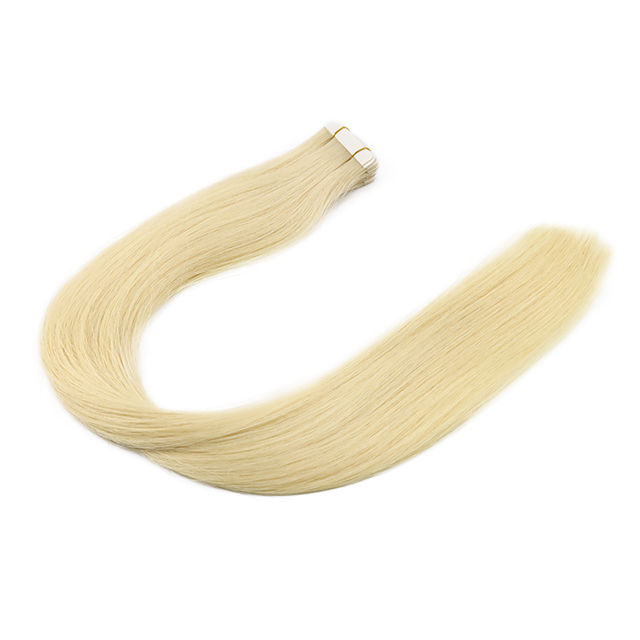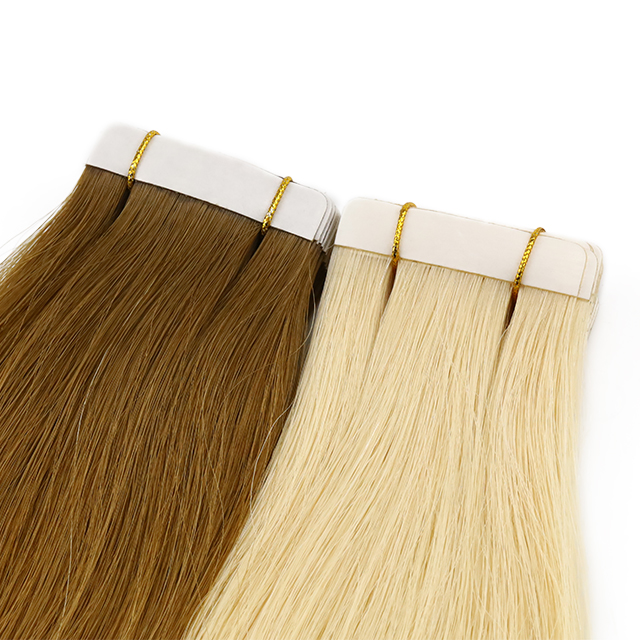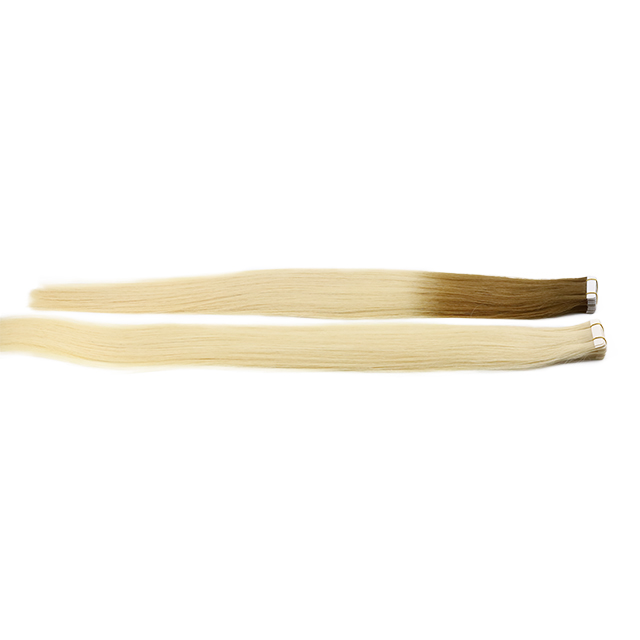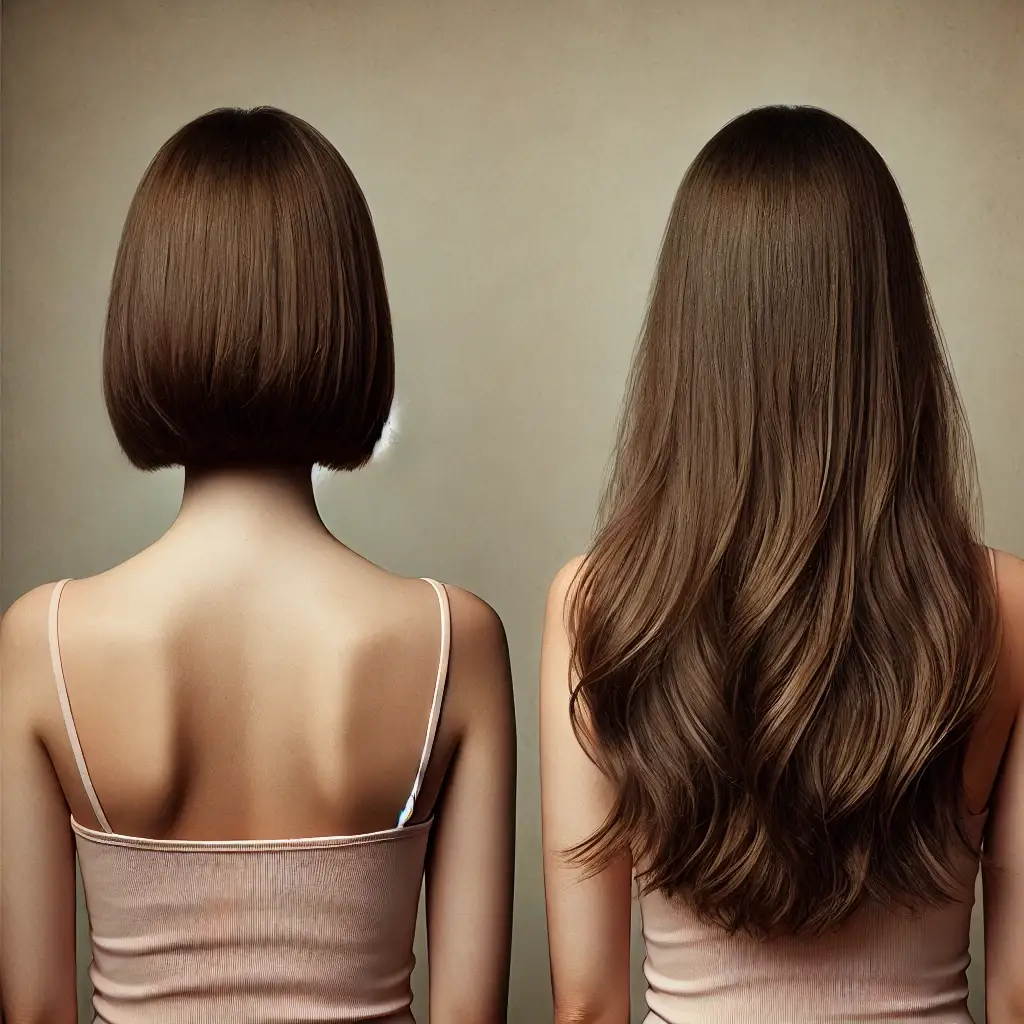
Tape-in hair extensions are a popular choice for many individuals looking to add length, volume, and style to their hair. However, maintaining the health and longevity of both your natural hair and the extensions requires proper care, especially when it comes to washing. Many individuals are concerned about washing tape-in extensions, worrying about damaging the adhesive bonds or causing the extensions to slip out prematurely.
In this article, we will explore the process of washing tape-in extensions, including expert advice, case studies, and important tips on selecting the right products. We’ll dive deep into the best practices for ensuring that your extensions stay in place and maintain their natural look for as long as possible. Whether you’re new to tape-ins or a seasoned user, this guide will provide you with all the information you need to wash your hair without damaging the extensions or the adhesive.

Tape-in hair extensions are a semi-permanent type of hair extension that uses a special adhesive tape to attach small sections of hair to your natural hair. These extensions lie flat against the scalp and are designed to blend seamlessly with your hair for a natural, voluminous appearance. The adhesive is applied in a “sandwich” method, where two wefts of hair extensions are attached with a section of your natural hair between them.
There are various types of hair extensions, including clip-ins, sew-ins, fusion, and tape-ins. Tape-in extensions stand out because they are more discreet, lightweight, and comfortable compared to bulkier methods like sew-ins. Unlike clip-ins, which are temporary and must be removed daily, tape-ins can last for weeks and give a more permanent look without damaging your hair. Additionally, they do not require the use of heat or chemicals, making them a healthier option for your natural hair.
Tape-in extensions have gained immense popularity over the years, particularly because of their versatility, ease of installation, and natural appearance. Celebrities and influencers often use tape-in extensions to enhance their hair for red-carpet events or photoshoots, which has increased the demand for this method. According to recent market studies, the global hair extension market is expected to grow at a rate of 5% annually, with tape-in extensions being a significant contributor to this growth.
Tape-in extensions come in two main types: human hair and synthetic hair. Human hair extensions are more expensive but offer superior quality in terms of appearance and texture. They can be washed, styled, and even colored, just like your natural hair. On the other hand, synthetic hair extensions are more affordable but are limited in terms of styling and may not withstand washing and heat styling as well as human hair extensions. Most experts recommend using high-quality human hair extensions for long-lasting results and a more natural look.
The adhesive used in tape-in extensions is a specialized medical-grade adhesive designed to withstand water, heat, and daily wear. However, it is crucial to understand that improper care, such as using harsh chemicals or overwashing, can weaken the adhesive bonds. In this section, we will explore the chemical composition of these adhesives and how they interact with hair care products. The adhesives are designed to last 6-8 weeks, but with proper care, they can last even longer.
The global hair extension market was valued at approximately $3.42 billion in 2022 and is projected to reach around $5.21 billion by 2028, growing at a CAGR of 7.15% during the forecast period. Tape-in extensions account for a significant share of this market due to their rising popularity.
A survey conducted among tape-in extension users revealed that approximately 78% reported satisfaction with the look and feel of their extensions. Users cited the natural appearance and ease of styling as significant benefits.
On average, users spend between $100 and $300 every 6-8 weeks for maintenance and reapplication of tape-in extensions, depending on salon rates and the quality of the extensions used.
With proper care, high-quality tape-in extensions can last anywhere from 6 to 12 months. However, this can vary based on hair type, lifestyle, and maintenance practices.



Washing your hair is a critical aspect of maintaining scalp health, and this doesn’t change when you have tape-in extensions. In fact, keeping your scalp clean is even more important to prevent build-up around the adhesive bonds. Buildup from oils, sweat, and hair products can weaken the adhesive and cause the extensions to slip or fall out prematurely. Regular washing also helps maintain the shine and softness of both your natural hair and the extensions.
When washing tape-in extensions, there are specific dos and don’ts that should be followed to ensure longevity and maintain the health of your hair.
When selecting products for washing your hair with tape-in extensions, it’s important to choose ones that are specifically formulated for extensions or sensitive to adhesive bonds. Look for products that are free of:
Additionally, using lightweight, moisturizing products helps maintain the softness and manageability of your extensions without weighing them down.
The frequency of washing your tape-in extensions depends largely on your hair type and lifestyle. Here’s a guideline based on hair type:
Failing to wash your hair with tape-in extensions correctly can result in a variety of issues. Buildup from natural oils, hair products, and sweat can cause the adhesive bonds to weaken, leading to slippage or shedding. Additionally, poor hygiene can lead to scalp irritation, dandruff, and even infections.

Sarah is an avid fitness enthusiast who regularly participates in high-intensity workouts. She was concerned about how her active lifestyle would affect her tape-in extensions, particularly when it came to washing her hair frequently after sweaty workouts. To maintain her extensions, Sarah washes her hair every 3 days using a sulfate-free shampoo and dry shampoo in between workouts. With proper care, her tape-in extensions lasted the full 8 weeks without any issues.
Emily leads a hectic work life and often doesn’t have time for an extensive hair care routine. She washes her hair twice a week and uses dry shampoo to refresh her hair between washes. By following the right washing techniques, Emily has been able to maintain her tape-in extensions for over 9 weeks without slippage.
Grace loves outdoor activities, including swimming and sunbathing. However, she was initially worried about how chlorine and saltwater would affect her tape-in extensions. To protect her extensions, Grace always washes her hair immediately after swimming and uses a leave-in conditioner to keep her extensions hydrated. With this routine, she has successfully maintained her tape-ins even during a month-long vacation at the beach.
We’ve also gathered stories from other individuals who encountered unexpected challenges while wearing tape-in extensions. From extreme weather conditions to unplanned hair mishaps, these cases show how proper washing and care routines can extend the life of extensions.

Understanding the chemistry behind the adhesive used in tape-in extensions is essential for proper care. The medical-grade adhesive is water-resistant but can still be affected by the ingredients in shampoos, conditioners, and styling products. Excessive moisture or product buildup can weaken the adhesive, leading to slippage or shedding.
Certain ingredients in hair care products can have a negative impact on tape-in extensions. These include:
Maintaining the right pH balance is crucial for both your natural hair and tape-in extensions. Products with a neutral pH level help maintain the integrity of the adhesive while also nourishing your hair. pH levels that are too high or too low can cause damage to both the hair and the adhesive bonds.
Silicones are often used in hair care products for their ability to create a smooth, shiny finish. However, they can also coat the hair and adhesive, making it difficult for the tape to stick properly. Experts recommend using silicone-free products to prevent this buildup.
Dermatologists often emphasize the importance of scalp care when wearing tape-in extensions. Scalp irritation can lead to scratching near the adhesive bonds, weakening them over time. It is essential to keep your scalp clean and moisturized, using products that won’t disrupt the adhesive.
Salon professionals recommend the following best practices to ensure the longevity of your tape-in extensions:
One common misconception is that tape-in extensions should never get wet. While it’s true that excessive moisture can weaken the adhesive over time, tape-in extensions are designed to withstand normal washing and occasional exposure to water. With the right care routine, you can wash your hair without damaging the extensions.
Some people believe that washing hair extensions frequently will cause them to fall out or weaken the adhesive. While overwashing can lead to product buildup or dryness, washing your hair with the proper products and techniques won’t cause damage. In fact, regular washing is necessary to maintain both scalp health and the appearance of the extensions.
To keep your extensions looking fresh between washes, you can use dry shampoo to absorb excess oil and add volume. Just make sure to apply it sparingly and avoid the adhesive bonds.
If your extensions start to slip after washing, it could be due to product buildup or improper washing techniques. In this case, it’s important to consult with a professional stylist who can reposition or reapply the extensions.
Yes, you can swim or exercise with tape-in extensions, but you should take precautions. Always rinse your hair immediately after swimming in chlorinated or saltwater, and use a leave-in conditioner to keep the extensions moisturized. Additionally, tying your hair back during exercise can help prevent excessive sweat from reaching the adhesive bonds.

Emeda Hair is a renowned name in the hair extension industry, known for its high-quality products and innovative solutions. With a commitment to excellence, Emeda Hair offers a wide range of extensions made from both human and synthetic hair.
Emeda Hair provides various types of hair extensions, including clip-in, tape-in, sew-in, fusion, and micro-link extensions. Their products are available in different lengths, colors, and textures to cater to diverse client needs.
Popular Products:
Emeda Hair is dedicated to maintaining the highest standards of quality. They use ethically sourced human hair and advanced manufacturing techniques to produce extensions that are durable, natural-looking, and easy to maintain.
Key Features:
Many salon professionals and clients have experienced the benefits of Emeda Hair extensions. Testimonials and success stories highlight the brand’s commitment to quality and customer satisfaction.
Example Testimonial:
“As a salon owner, I have tried various hair extension brands, but Emeda Hair stands out for its superior quality and consistency. My clients love the natural look and feel of the extensions, and I appreciate the excellent customer service and support.” – Jessica, Salon Owner
Emeda Hair has significantly contributed to the hair extension industry by setting benchmarks for quality, innovation, and ethical practices. Their products and services have empowered salon professionals to deliver exceptional results to their clients.
Industry Contributions:
Washing your hair with tape-in extensions doesn’t have to be a daunting task. By following the right techniques, using high-quality products, and understanding the specific needs of your extensions, you can maintain beautiful, healthy hair for weeks on end. Whether you have an active lifestyle, a busy work schedule, or specific hair care concerns, tape-in extensions are a versatile option that can adapt to your needs.
Feel Free to contact us for future information or quotation,
Contact: Queena Wang
Tel/whatsapp: +86 18562611506
Email: sales06@emedahair.com

New customization and stock clearance
WhatsApp us